Description
Edible Hibiscus, Abelmoschus manihot, bele or abika, is a nutritious, high in protein, perennial shrub grown for its large leaves. The plant grows up to 12 feet tall, has leaves as large or larger than a plate, and a beautiful hibiscus flower. This plant is extremely hardy, vigorous and abundant. What a perfect food source! Edible Hibiscus has become one of my staple vegetables because it almost always has leaves I can harvest.
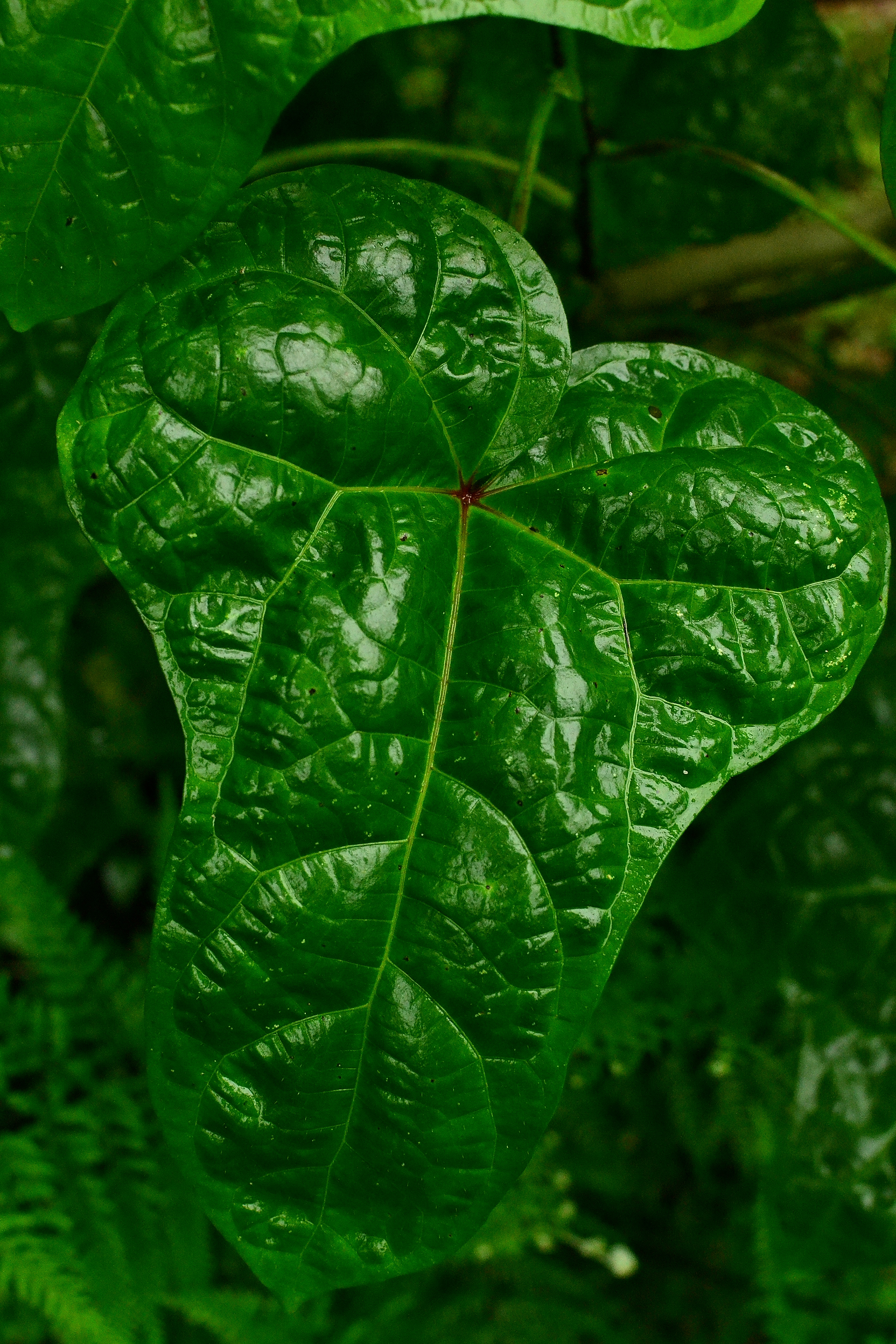
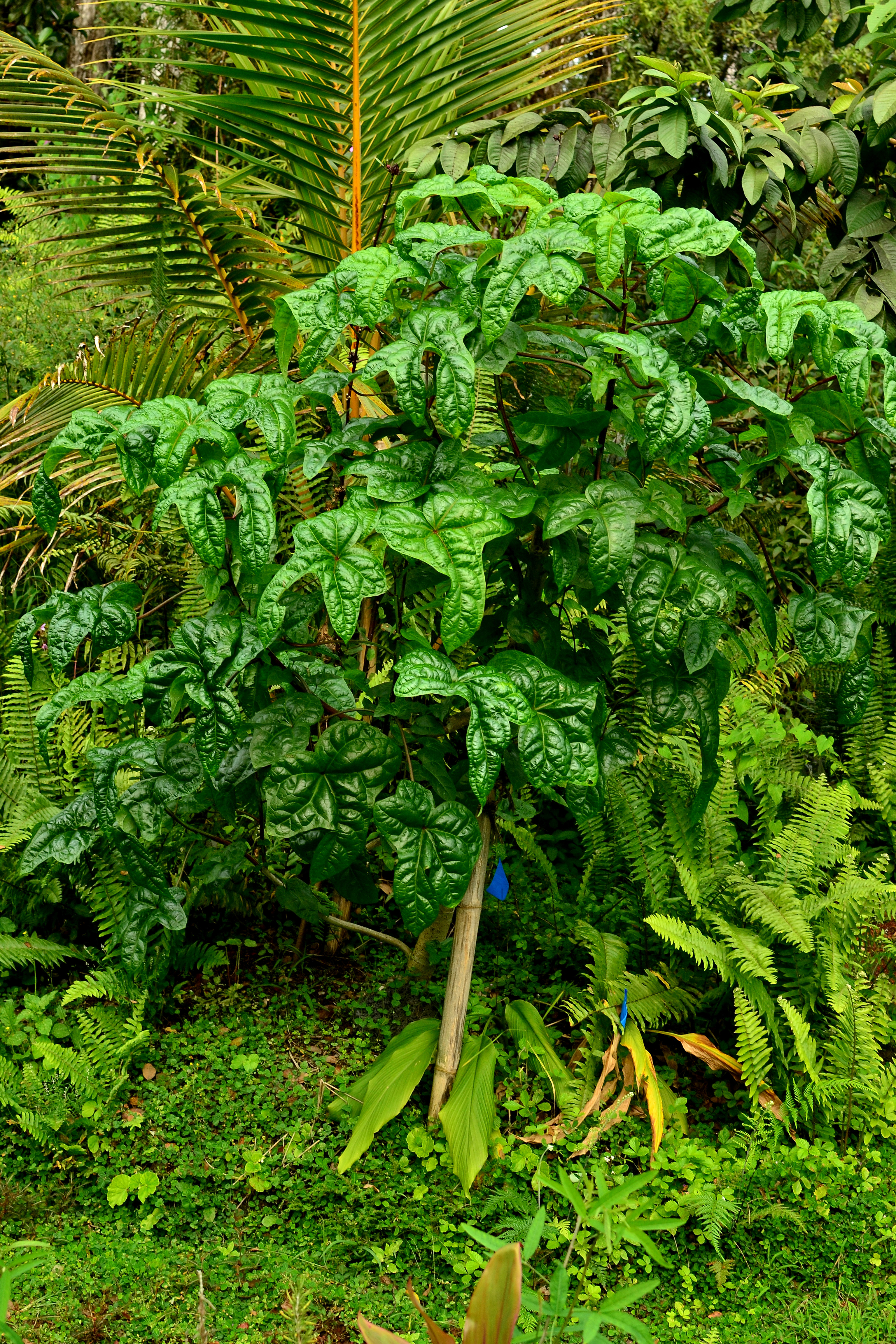
Propagation
Edible Hibiscus is grown primarily from cuttings. Simply cut off a branch or some of the trunk and take those cuttings and stick them in the ground. They will take off after a short period and begin growing rapidly! I usually use cuttings a foot or so (30 cm) in length.
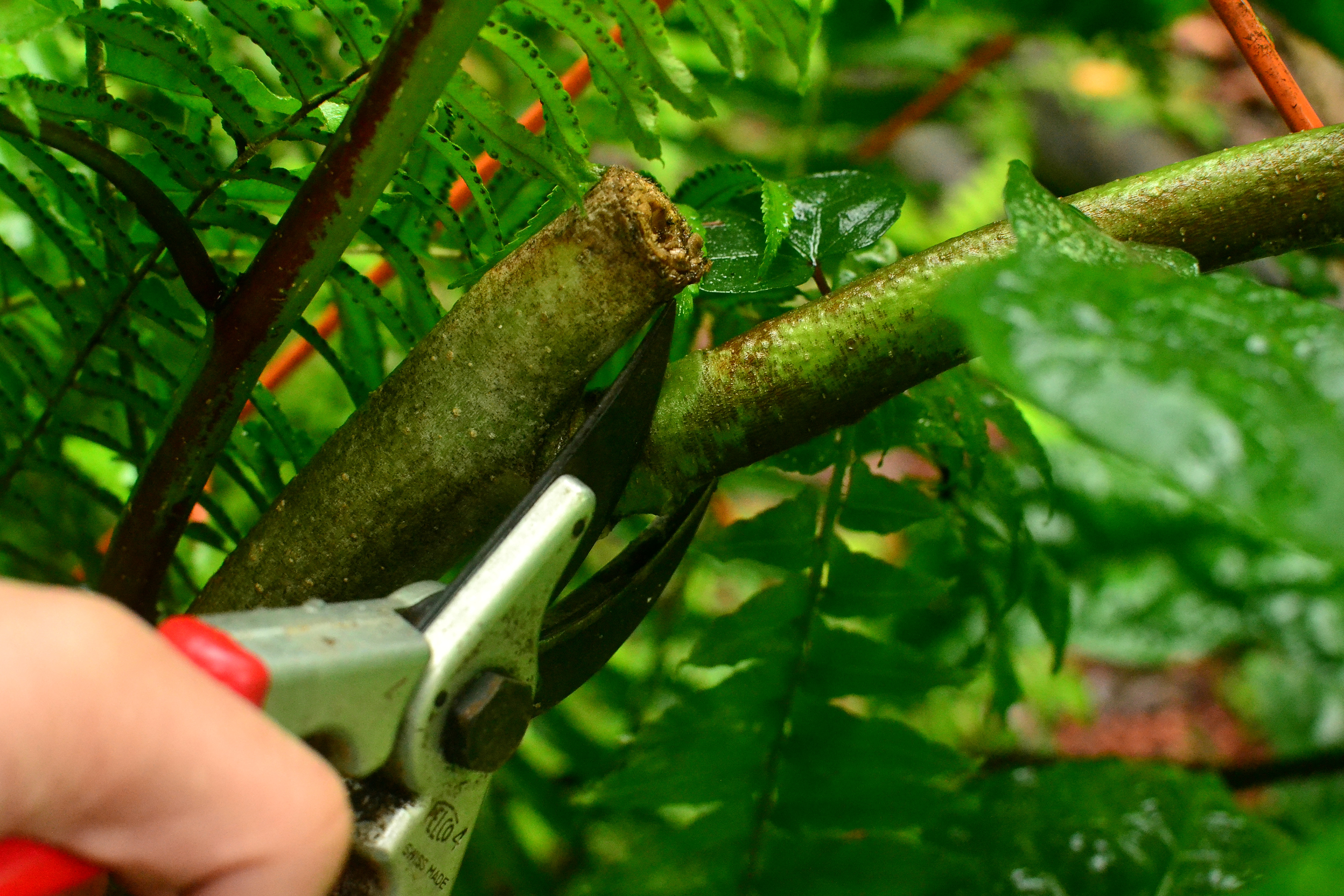
Cut off branch or trunk.
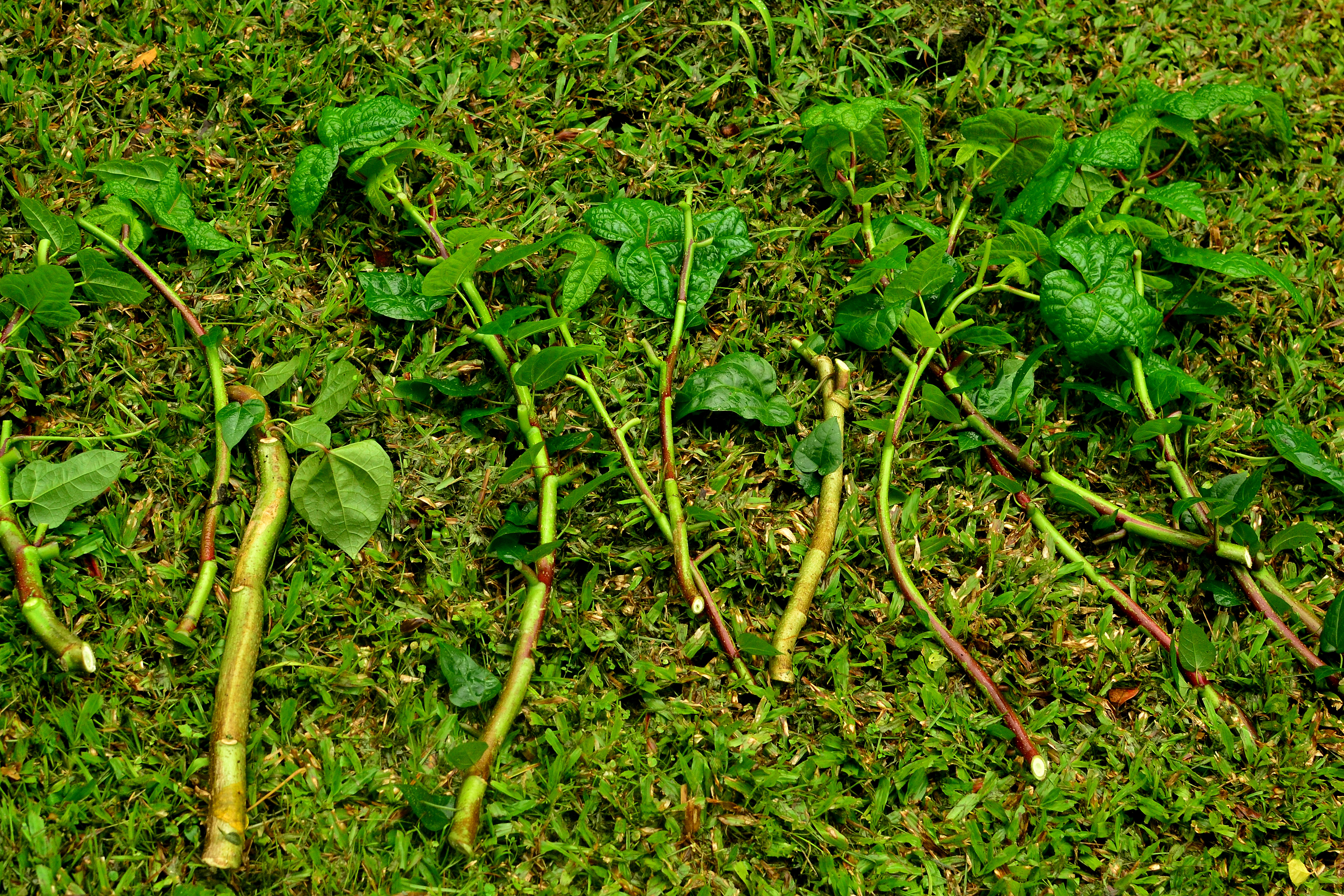
Trim off larger leaves.
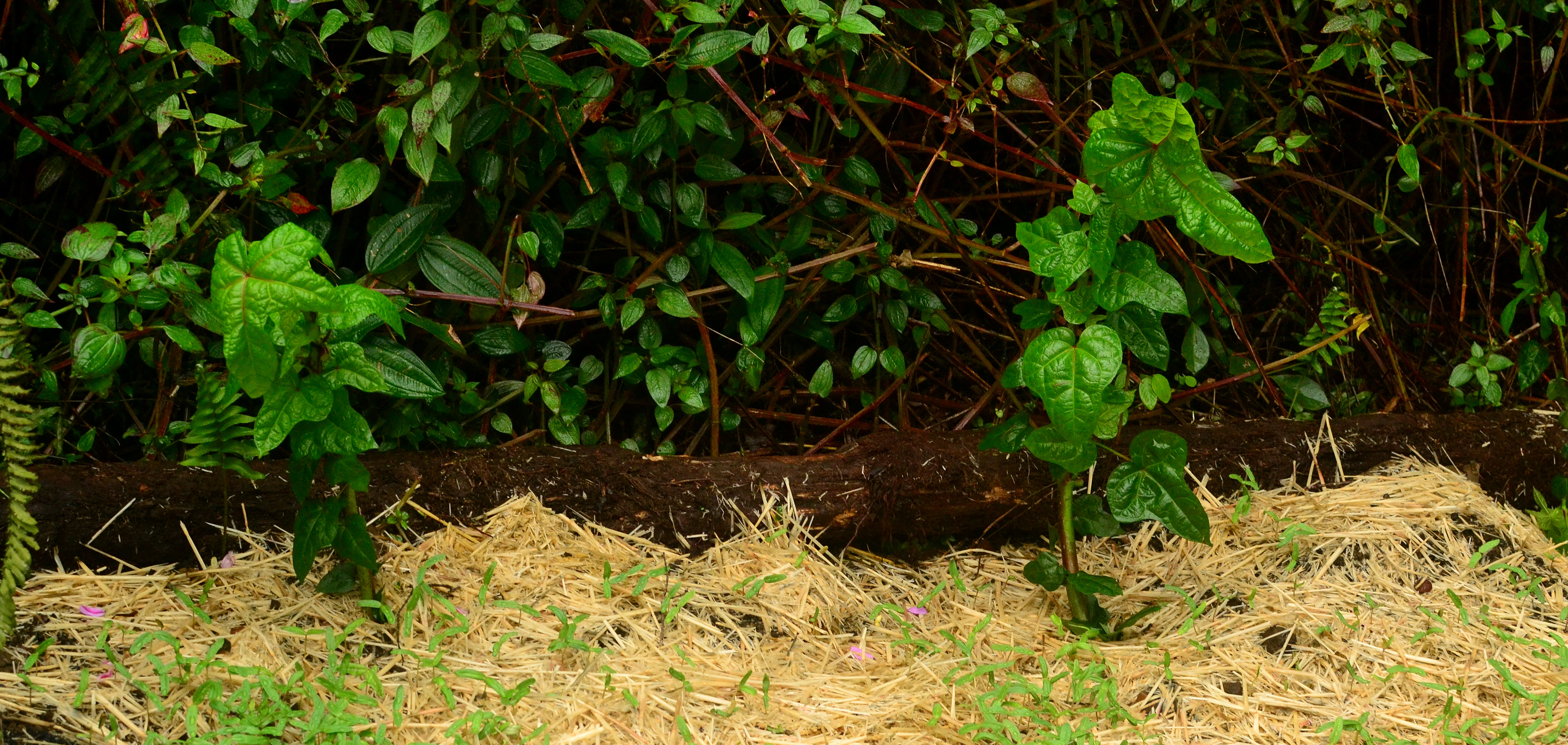
Stick into the ground.
Care
Make sure to give the plant plenty of water. It grows in part shade as well as full sun. Just sit back and watch it grow!
In my experience the plant gets top heavy and falls over in large rains/winds, so I constantly cut it back so its not too heavy and have it supported by a trellis.
Eating
You may eat the leaves raw or cooked, boiled or roasted. The larger leaves seem to be a bit more slimy than the smaller ones. But are both delicious. I usually eat smaller leaves raw and cook larger ones. Leaves are also excellent for thickening sauces or soups.
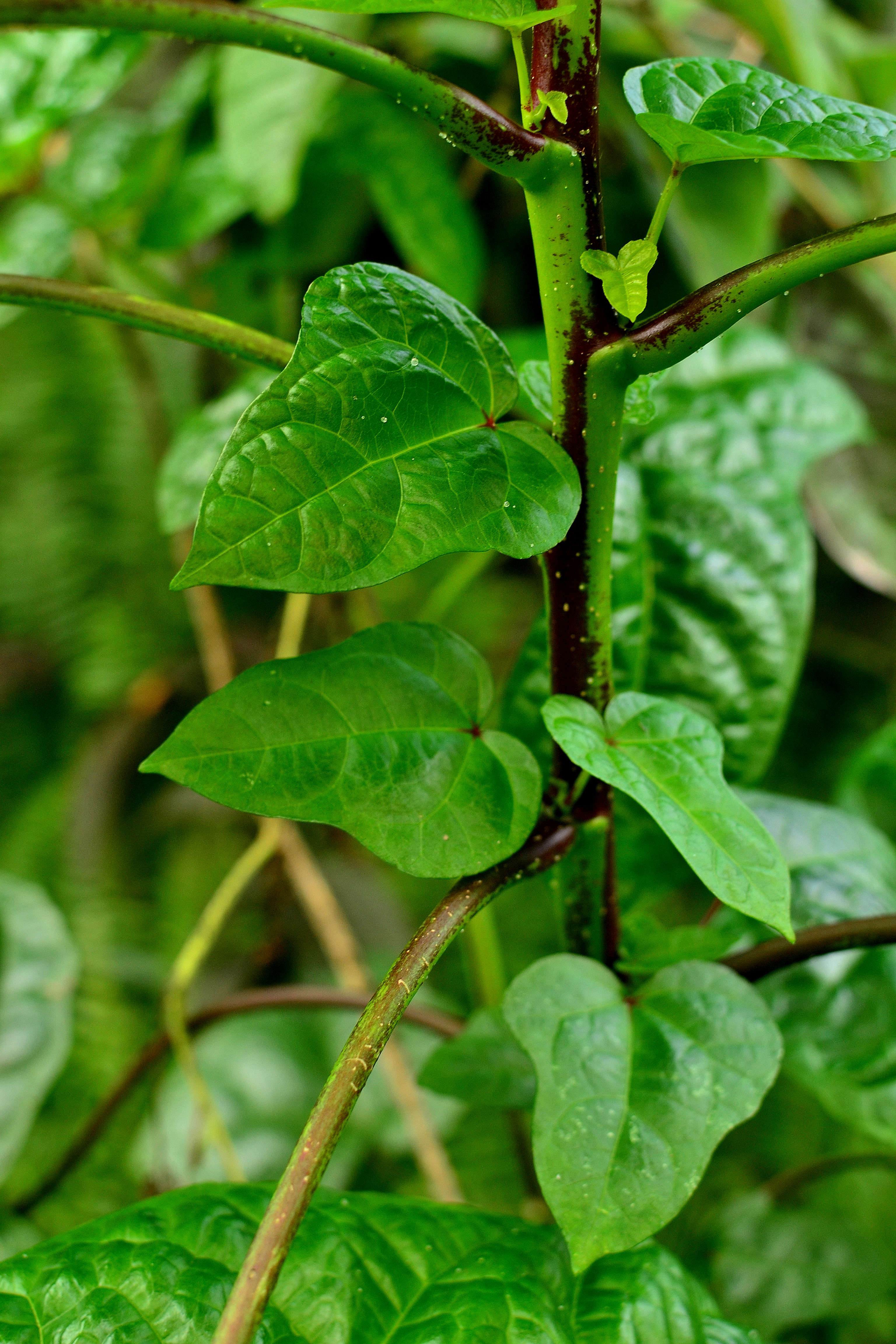
Where to obtain planting materials
Ask anyone growing edible hibiscus for cuttings.
My Garden
I have trouble growing annuals during winter, due to day length, so I have to rely on my perennials for my food source. I’ve been growing Edible Hibiscus for over a year now, but I was only using it occasionally until recently. So noting the abundance of leaves on the hibiscus, I decided to eat it more regularly and I’m really enjoying it! Now that the plant is established, I have to prune the plant heavily every few weeks, giving me tons of cuttings to spread all over the yard. Aiding in over-abundance of a valuable food source, gearing me toward food self-sufficiency, the ultimate goal. Here’s some of my plantings around the yard:
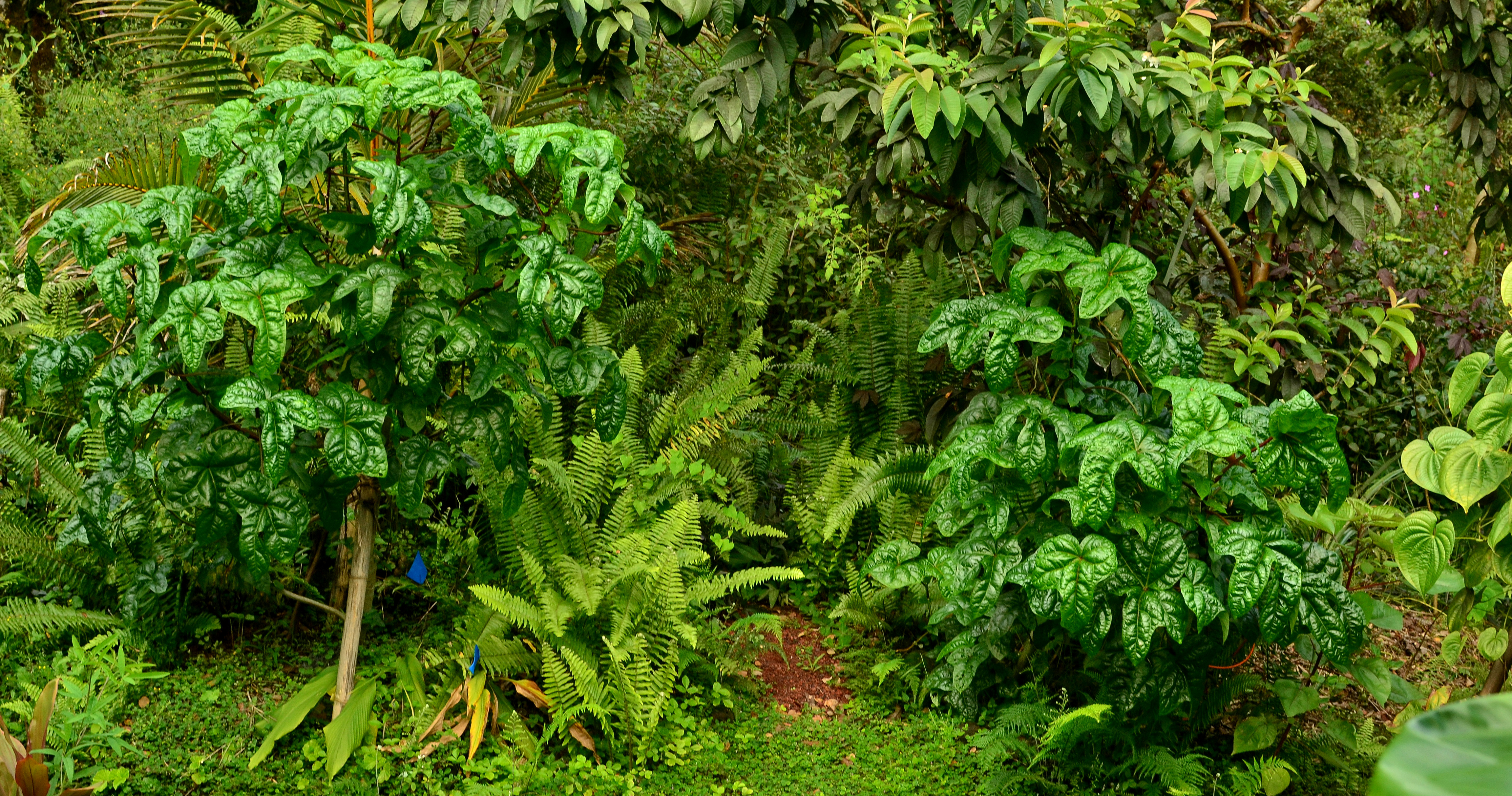
Main garden: Edible Hibiscus, Guava, Araza, Coconut, Roselle, Cranberry Hibiscus, Cabbage, Turmeric, Strawberry, Hot Peppers, Air Potato, Tomato, Chia, Sweet Potato, Basil and many others.
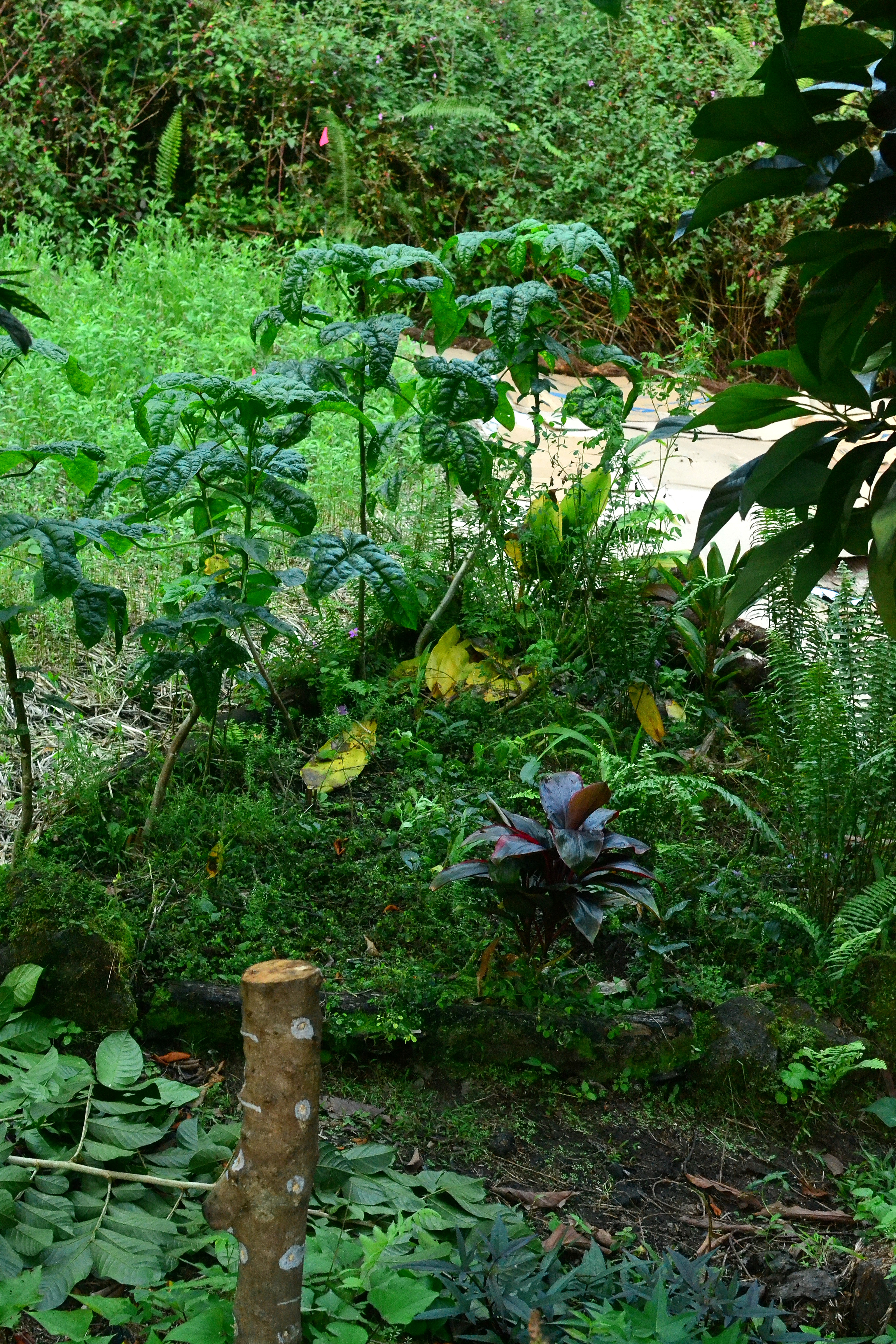
Food Forest: Understory: Edible Hibiscus, Tea, Sweet Potato, Ti, Desmodium, Okinawa Spinach, Cardamom, Crotolaria, Moringa, Sissoo Spinach, Taro, Chaya, Poha and a mushroom log. Overstory: Avocado, Orange, Star-Apple, Hawaiian Cotton, Papaya, Brazilian Cherry, Breadfruit, Kōpiko and ‘ōhi’a Lehua. Young Trees: Acerola, Finger Lime, Allspice, Vi, Ice Cream Bean, Gliricidia, Mangosteen and Banana.
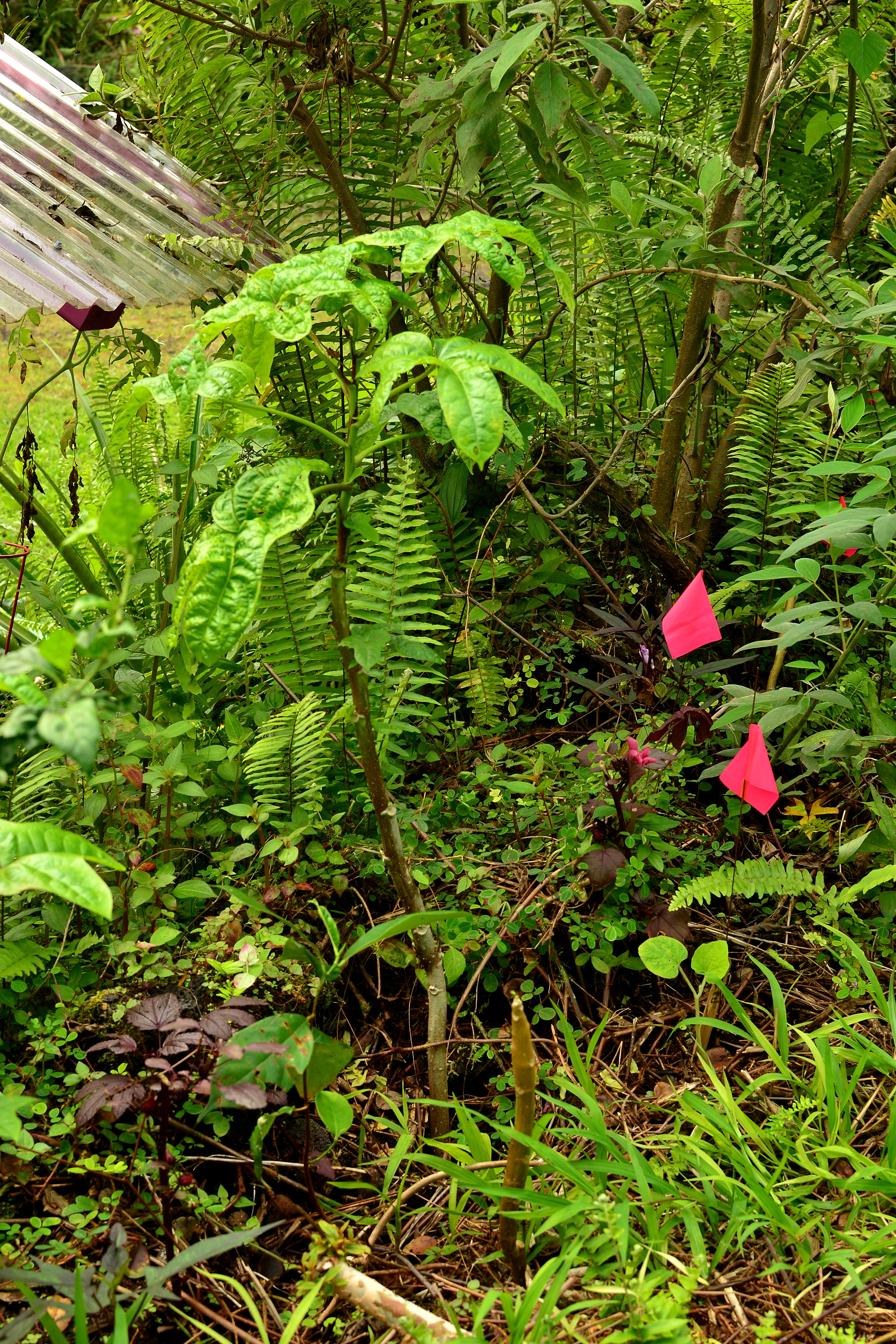
Behind Nursery Table: Edible Hibiscus, Cranberry Hibiscus, Chaya, Gourd, Pigeon Pea, Sour Bush, Sweet Potato, Voluntary Artocarpus, and Desmodium, behind these are a row of Bananas, Lemongrass and a Gliricidia.
Happy Gardening!
Buuut what do they taste like?
its almost like a slimy spinach or seaweed. but still has crunch when eaten raw
I’m loving this blog! I’d really love love to see a post about what you do for soil, compost, fertilizers, etc. I’ve got some soil but still lacking! I’m just starting out with papaya and bananas, but my dream is to grow my own veggies and fruits completely. I’m inspired by what I see here so far! Thanks for the time you put into this. Been looking for a blog like this since I moved here.
mahalo! ive been wanting to write an entry about soil making, but im still working out many experiments to see what works best here, still lacking in my tropical composting skills (its been hard finding carbon materials around the property).
but the key for soil building that ive found, is growing plants strictly for chop and drop/nitrogen building. due to our heavy rains, nutrients leach out of our soils quite rapidly. so nutrients are held in the plants themselves rather than in the soils. so when you cut down a plant youre making those held up nutrients available to the surrounding plants to take up. youre also adding biomass and mulch to your plants when you cut something down and throw it directly around you plants. feeding and keeping soils moist. you can use almost all of your yard waste to create soils directly at your house with a little bit of creativity.
i should just write up an entry with nice photos! haha.
im glad youre finding the blog inspiring. bananas and papayas are great plants to start out growing, theyre extremely hardy and produce so much food quickly! theres so much potential growing food in hawaii, everyone with a little bit of land could grow a quarter of their diet with the knowledge around us. just trying to make that knowledge easily accessible for all 🙂
Pingback: Rapid Resilient Food Systems | Tropical Self-Sufficiency
Mahalo! I live in Costa Rica also have a blog and I wrote some information about Bele, recently a friend of mine gave some cuttings of this marvelous vegetable!
I also have a organic garden. I do composting that help a lot my soil. In two more weeks I will be collecting MM (mountain microorganism) after that I will prepared them and be ready in aprox. two months to be add them in a liquid form to the plant beds.!
that sounds awesome! i also like to do a compost tea out of my finished compost. i put one shovel-full of finished compost into a 5 gal bucket and fill it half way with water. i leave it for three days, covered and stir occasionally, and then strain the liquid and spray that around my garden. if its a nice rainy time i wont dilute it at all and if its not so rainy ill dilute it a bit. its amazing how quickly things turn a deeper green and flourish! you could try that out while your awaiting your MM to finish up. ill check out your blog too, lets see how rusty my spanish is!
Can you send me some cuttings?
i dont ship out plants. but baker creek sells some tissue culture varieties!
My favorite way to cook it is similar to lau lau.
I chop the leaves up add coconut milk and cook for about 15-20 min.
It’s not slimy at all and sooo good.
sounds delicious!